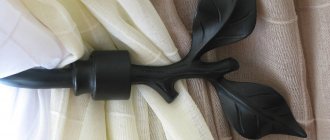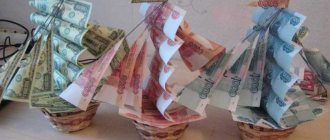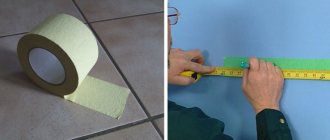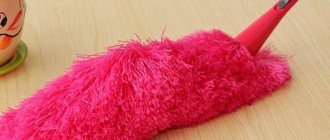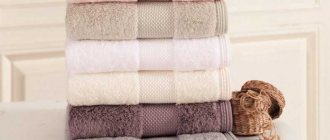A towel is an indispensable care item in every home. Each of us plunges into his arms after taking a shower, after going to the bathhouse. When drying your hands, face, body, everyone wants to feel softness and warmth. Many people choose beautiful pieces to complement their kitchen and bathroom designs. The “right” towel becomes a friend for a long time, but a low-quality product will quickly disappoint the owner. When purchasing, you need to know how to choose a towel, pay attention to density, material, durability, absorbency and other characteristics. This is what we will talk about.
Main types of towels
Before you go to the store to buy the accessory you are looking for, you should decide for what purpose you are making the purchase. How to choose a towel, what is it for? There are many types of this product, and each has its own properties. The most common and basic types include the following:
- A bath towel. Must be large in size. It's nice to wrap yourself in it after a shower, bath or sauna. It should absorb moisture perfectly, be soft, tender, and warm. Typically, bath towels include large terry products.
- Kitchen towel. There are special requirements here. Towels in the kitchen constantly come into contact with water, grease, dirt, and harmful liquids. It is intended for wiping dishes, tables, and hands. The material should be without long pile, or better without it. It is good to choose linen or waffle towels for the kitchen.
- Face towel. These products come into contact with sensitive, delicate facial skin. You need to approach your choice more carefully. It is better to choose soft, well-absorbing specimens. Bamboo towels are suitable for washing.
- For hands and feet. These towels are selected in small sizes and are hung near the washbasin. The main requirement is good absorbency.
Benefits of bamboo towels
High intensity of moisture absorption: bamboo threads absorb various types of liquids extremely quickly. Their ability to absorb water stands out as one of the most attractive features of all towels.
Pure Natural Materials: These towels are actually very eco-friendly. The characteristics of the bamboo plant allow it to grow very quickly, and these towels do not harm the environment.
Comfort: Towels are very delicate, especially when they are made from bamboo without any blends. This is what really makes them an excellent solution for use in a professional environment (beauty salon, spa, wellness, baths, sauna, hairdresser, fitness club, barbershop, hammam, cosmetology clinic)
Minuses:
Quality Check: Before purchasing a bamboo product, you must ensure that it satisfies all your criteria by wisely choosing a reliable manufacturer, supplier. Some companies are just hoping to make a quick buck and offer low-quality items - this is the main problem when purchasing bamboo fibers.
Hypersensitivity. Bamboo products can release certain fragrances into the air, which may cause some “sensitivity” to your customers or visitors. These segments are almost impossible to avoid in towel production and are a constant problem with bamboo.
Expensive: Bamboo towels have higher prices than their cotton counterparts.
Other types
In addition to the types listed, there are many different types of towels. Particular attention should be paid to products for children:
- Children's towels. The material for such specimens is special: soft, delicate, with double-sided terry. Children will be interested in towels with bright patterns. They are often made with a hood so that the baby does not throw the towel off his head.
- A beach towel usually combines two functions at once. They enjoy drying themselves off after swimming in the sea, and also lie comfortably while sunbathing in the sun. The main requirement is good absorbency, as well as a convenient size.
- Towel or wedding towel. It carries more of a semantic function. A gift for an important event. It is usually made of linen, decorated with embroidery, floral patterns, and images of doves, larks, and swans.
- Massage towels are specially made with a specific combination of cotton and linen. They are more rigid and allow you to relax and calm the muscles.
Children's terry towels
Choosing children's terry towels is a very pleasant and at the same time responsible business. It is important to choose a high-quality and attractive-looking product that your baby will like and will take care of his delicate skin. All Cleanelly products for children are made from natural materials and meet the strictest Russian and international quality standards, which guarantee their complete safety.
The Cleanelly collection includes:
- classic terry towels for children with bright, funny designs
- terry corners after bathing for the little ones, which perfectly absorb moisture and are gentle on children's sensitive skin
The standard size of children's corners is 70x140 cm, towels - from 50x70 cm to 100x150 cm.
Dimensions
Before choosing a towel, you need to decide in advance on the size of the product. Like all textile products, towels have their own size standards. Imported ones may differ slightly, but basically the indicators are the same, mainly as follows:
- Guest or toilet towels. Size 30x30 (30x50). Used on hands or in the kitchen.
- Kitchen standard 50x70.
- For face towel 50x85(90).
- A 50x100 towel is usually used for the face or as a small shower.
- Medium bath (can be used for a shower) 70x140.
- Classic bath 80x160.
- Large sizes 100x150 or 90x160 are often used in baths and saunas. You can wrap yourself thoroughly in this towel. Can be used as a small terry sheet on the beach or in a massage room.
- Size 80x200 is also used in a bathhouse or massage room.
- Sizes from 150x200 to 175x250 can already be classified as terry sheets.
Benefits of cotton towels
Reasonable: Cotton is one of the low-cost materials, which can offer high quality to customers in the meantime; due to which, it makes it popular and the most standard type of towels.
Easy to dye: Simply dyeing cotton with natural materials allows the towel to change shades without the need to chemically alter their composition.
Easy to Wash: These towels are extremely easy to clean. All you need is a washing machine!
Dries quickly: Cotton is one of the most common textures when it comes to breathability, allowing cotton towels to dry quickly.
Minuses:
Not very durable: Cotton towels are more prone to damage than their other counterparts.
Colors and Washing: If you're going to machine wash one of your cotton towels, you may want to hold off on washing it with your clothes. Sometimes colors come out of towels and can affect other textile items.
Size measurements: Cotton towels can sometimes shrink after drying - this problem is mostly associated with cotton sheets (very rare with cotton towels).
How to choose a towel. Types of fabric
When choosing a towel, you need to consider the fabric from which it is made. Each product has its own advantages:
- How to choose a terry towel? This product is woven with four threads in such a way that small loops are formed on the surface. They give the fabric volume and softness. A terry towel with large loops attracts with its convenience and comfort, excellent absorbent properties, abrasion resistance and hypoallergenicity.
- Velor towels. Cotton is woven into four threads, and the resulting loops are simply cut off. The surface eventually becomes shiny and looks beautiful. Velor towels are useful for facial skin, they are gentle and soft. But they absorb moisture a little worse than terry ones.
- Waffle towels. Cotton is woven here in a completely different way. Small cells form on the surface of the tissue, hence the name “waffle cell”. They are most often used in the kitchen for dishes and hands; they absorb moisture well.
- Jacquard towels. Special machines are used for weaving. The cotton threads are tightly intertwined and the pattern is formed in a special way. Such products are more expensive than others. Jacquard towels are woven from double thread, double-sided. They come in both terry and smooth. The appearance is stylish and beautiful.
Materials
Cotton has always been considered the most common and respected material in the production of towels. This natural material perfectly absorbs moisture, is environmentally friendly, and durable. In addition, it is pleasant to the touch, soft and hypoallergenic. Good cotton towels are more expensive than their synthetic counterparts, but they also last better and much longer.
Before choosing a good towel, carefully study the product label. Some manufacturers cleverly deceive us by indicating “100% cotton M” in the composition - this indicates the addition of artificial fiber or, for example, “100% cotton PC” - in this case polycotton is added. When choosing, you need to take into account the country of origin of the cotton. The highest quality cotton for making terry is from Pakistan and Egypt.
The composition of towel fabric often includes a type of synthetics such as modal. It makes the towel more beautiful, soft, fluffy, and pleasant to the touch. Products with modal are quite wear-resistant. The addition of other synthetic fabrics negatively affects the absorbency of the product.
What to look for when purchasing?
But you need to know a few more little secrets that will greatly help when choosing a quality terry towel:
- Pile length is one of the main factors when choosing a good bath accessory. Ideally, the pile should be 5 mm. This is the best option. Too long will take a long time to dry, will quickly roll up and lose its appearance. A short one will be tough and poorly absorb moisture. Such a sample will very quickly become unusable.
- When purchasing, pay attention to whether the option you choose is crumbling. If small fibers remain when compressed, this indicates that low-quality fiber was used in production. This item won't last long.
- You should always look at the label. A natural product should be marked 100% cotton. Sometimes manufacturers decide to cheat and designate them with other symbols to hide the addition of synthetics. But we will help you figure it out:
- cotton 100% is a composition made of pure cotton without any additions;
- 100% cotton M - there is an artificial thread here;
- 100% PC cotton - polycotton added.
But this parameter is generally not indicated on the labels. To determine “by eye” which one to take, you need to weigh it. To do this, take 2 identical towels, between which you are choosing, and compare them in your hands. Whichever is heavier is correspondingly denser. According to the standard, the density should be approximately 500 g/sq.m.
But, at the same time, the product should not be very thick. Otherwise it will take a long time to dry. Which is not very convenient for daily use.
Terry towels are already a classic. They are perfect for both the whole body and the face - durable, soft, gentle. Ideal for delicate skin.
Manufacturers can add bamboo, linen, silk and eucalyptus to the composition. This softens the fabric and makes it more pleasant.
Bamboo
Recently, the most popular towels are products made from bamboo fiber or in combination with cotton. If you are faced with the question of how to choose a bath towel, we advise you to pay attention to bamboo products. They perfectly absorb moisture, look shiny, delicate, and have antibacterial properties. They are suitable even for allergy sufferers and asthmatics, comfortable to use and pleasant to the touch. These towels are stronger than cotton products and will last much longer. The composition, together with bamboo (except cotton), may include lyocell. This is eucalyptus fiber, which is also natural, environmentally friendly, copes well with moisture, and dries quickly. One minus is that it wears out a little faster than cotton and bamboo.
Other components in the addition may include silk and linen. These natural fibers also improve the quality of the product. Make it more shiny, smooth, durable.
How to navigate the compositions?
The best terry towel should be made from natural fiber . Most often they are made from:
- cotton - a product made from cotton terry is incredibly soft and delicate, perfectly absorbs moisture;
- linen - such textiles will last a long time because they are quite wear-resistant;
- bamboo - in addition to the above properties, a bamboo product has antibacterial properties.
Important! On the label of home textiles you can see a designation that, at first glance, indicates an absolutely natural composition. It may look like this: “100% cotton (P)” . In fact, the composition contains artificial fiber polyester, which, although its properties resemble cotton, is not identical to it.
How to wear boho style at 50 and not miss?
What to wear to a wedding for a forty-year-old woman
We check the quality
You have already learned how to choose the right towel according to the type of fabric and size. Now we need to determine the quality of processing. Pay attention to the treatment of seams and the quality of dyeing. Already in the store you can detect bad coloring. Run a white damp cloth over the towel; if it is even slightly stained, discard the purchase. The product fades during the first wash.
Pay attention to the processing of seams. All threads must be of the same type and cut evenly, and not stretch beyond the border of the product. Most often, the edges are processed with an overlock or seam. The second option is preferable; the edges will not fray longer. The stitching should be even and strong.
Towel density - how to choose?
The weaving density of all products is different. It is indicated per square meter of fabric in grams. A thin waffle towel has a density of 150-250 gm2. Higher numbers from 300 to 800 gm2 indicate the density of the terry towel. How to choose a terry product? Pay attention not only to the density, but also to the height of the pile. The strength, absorbency and elasticity of the towel depend on this. Higher densities will guarantee a long service life. How to choose a bath towel based on density indicators? The optimal choice is from 400 to 600 hm2. This towel will perfectly absorb moisture, but will not get wet through and through as soon as you wrap yourself in it. Dries quickly and lasts for many years. Terry products with a density of less than 350 will not last very long, so even in order to save money, it is not profitable to buy them. As for the pile, it must be added that the best option is a pile 5 mm long. Products with 8 mm bristles, at first glance, are fluffier and softer, but after several washes the towel will become hard, as they will simply roll up.
What should the pile be like?
Terry towels have a special pile - “close-knit” loops on the surface. The softness and fluffiness of the product depends on their length. The villi can be 3–8 mm long, with a value of 5 mm being considered ideal. The moisture-absorbing properties of the product depend on the length of the loops. The longer they are, the better the towel absorbs moisture. But loops that are too large (more than 5 cm) can stretch, lose their shape and roll up after washing. Pile less than 3 mm long lasts longer, but absorbs moisture less well.
Towel care
And, of course, it’s worth mentioning the care of towels. As for washing, it is better to wash a new product after purchasing it. It is unhygienic to use a towel straight from the store. When washing, the water should not exceed a temperature of 60 degrees. Load the machine no less than 70%. The powder should be used for colored laundry. Set the wash cycle to medium speed (up to 800), otherwise the loops may pull. Do not use a lot of conditioner, as this will affect the absorbency of the terry. There is no need to iron the towel, but if you do, use a damp cloth and heat the iron to no more than 150 degrees. If puffs have formed on the towel, they can be easily cut with scissors; weaving allows this. Take good care of your products and they will serve you for many years.
A haircut
Terry loops, which are “planted” on the towel frame, can be classic or sheared, when the top of the loops is cut off. Haircuts on our equipment can be performed in a variety of ways – from the most extremely short to “a little trim”. The length of the pile and, as a result, the fluffiness of the product depends on the haircut. Terry, the surface of which is made up of simple loops, is softer. However, such fabric can be easily damaged if it gets caught on something sharp, or the loops can be pulled out. Therefore, products made from this material are less practical, but softer and more comfortable.
Haircut allows you not only to increase the resistance of towels to mechanical damage, but also to create a relief pattern directly in the structure of the terry.
